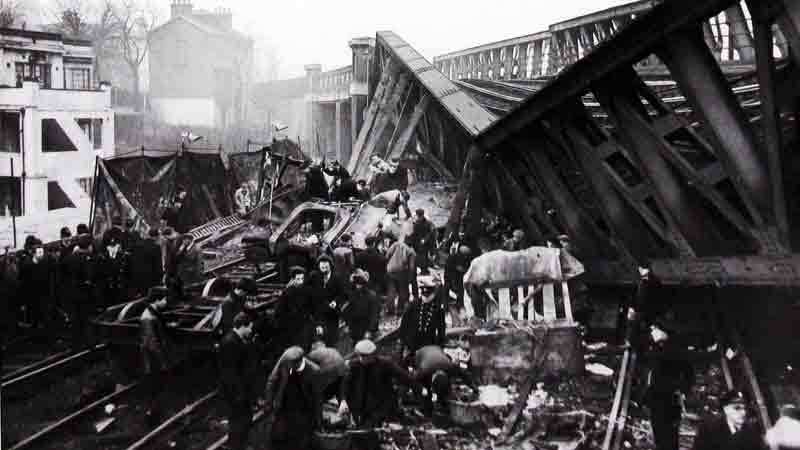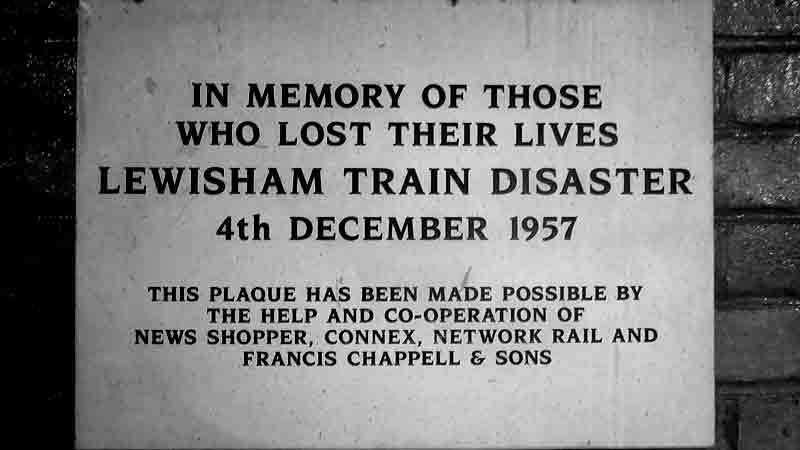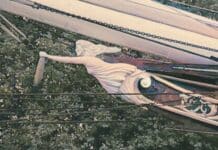EDDIE BRAZIL says the ghostly cries of train crash victims in haunted Lewisham in London could be explained by Stone Tape Theory…
It’s there’s one aspect of the paranormal which would probably find a place on the scientist and parapsychologist table for serious discussion, it is Stone Tape Theory.
That’s the notion that paranormal phenomena are not caused by the dead returning to haunt the place where they died or the people that they loved.
But rather the ability of inanimate objects such as wood, stone or metal to absorb human energy given off at times of human stress.
Stone tape theory was put forward by writer Nigel Kneale in his 1973 TV drama of The Stone Tapes. It’s based on the idea that ghostly phenomena are recordings stored in the fabric of a building, and only waiting for the right person or medium to enter and playback the sounds, sights or feelings of the original tragedy.
Tom Lethbridge expands Stone Tape Theory
The stone tape idea appealed to many parapsychologists, none more so than Tom Lethbridge, a Cambridge archaeologist and writer, who died in 1971.
Lethbridge expanded Kneale’s theory by suggesting that a damp atmosphere could also act in the same fashion as the fabric of a building and record sounds and visions.
He hypothesized that rainy, humid or foggy damp conditions might also have the same effect.
Lethbridge came to this theory after walking on a beach in Cornwall during a foggy day.
He said at a certain spot he felt an overwhelming sense of depression and fear. He thought he could hear distant cries, but concluded they may have the sounds of sea birds.
He was later to discover that many suicides had occurred there by people jumping to their deaths from the cliffs above.
Many had happened on overcast, rainy days.
If Lethbridge’s theory is correct, it may well explain what was experienced in 1983 by a British Rail bridge inspector who had been working on the St Johns flyover in Lewisham, South East London.
But first we must go back almost 30 years to a night in December 1957.
Lewisham train crash kills 90
On the evening of 4 December 1957, two trains collided in dense fog at Lewisham station, causing the deaths of 90 people and injuring 173 more.
A local train had stopped at a signal under St Johns Bridge, and the following steam train ran into its rear, causing the bridge to collapse.

Twenty-six years later at 2am, on a foggy night, as the British Rail inspector waited for a night bus at Lewisham clock tower, just 100 yards from the station, he heard someone calling for help.
The voice seemed to be coming from the roof of tall buildings around him and the person sounded as if they were trapped.
The inspector immediately phoned the police and a patrol car soon arrived.
Police not surprised by Lewisham ghost cries
The police constable could also hear the strange cries, but curiously he was unperturbed by what he heard.
He told the incredulous inspector that no one was trapped, or that there were any people calling for help. He revealed they were the voices of those killed in the Lewisham train disaster.
The constable had heard the sounds before, and it was well known locally that on foggy nights their desperate cries ring out.
Lethbridge’s theory remains conjecture, yet he may well have a point.
Britain is considered the home of ghosts and phantoms.

There are more paranormal incidents experienced in the UK than anywhere else on the planet. It is indeed, The Spooky Isles. But why?
When the Romans first sighted Britain they reported that it was shrouded in fog and mist. A damp, rainy, sinister land. An island of ghosts.








One of the girls I worked with back in the 50s Her dad was in the Lewisham train crash Luckily he servived